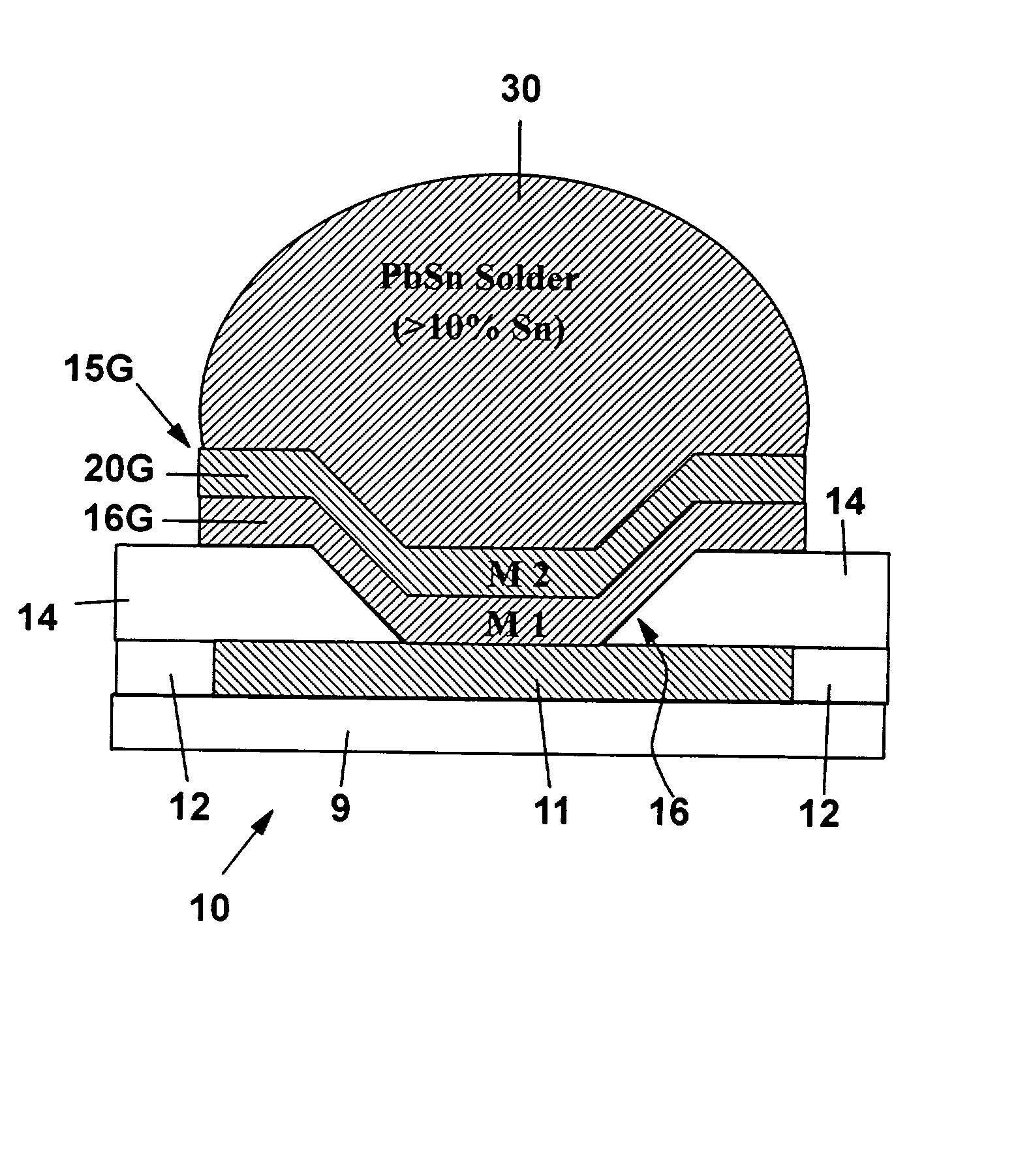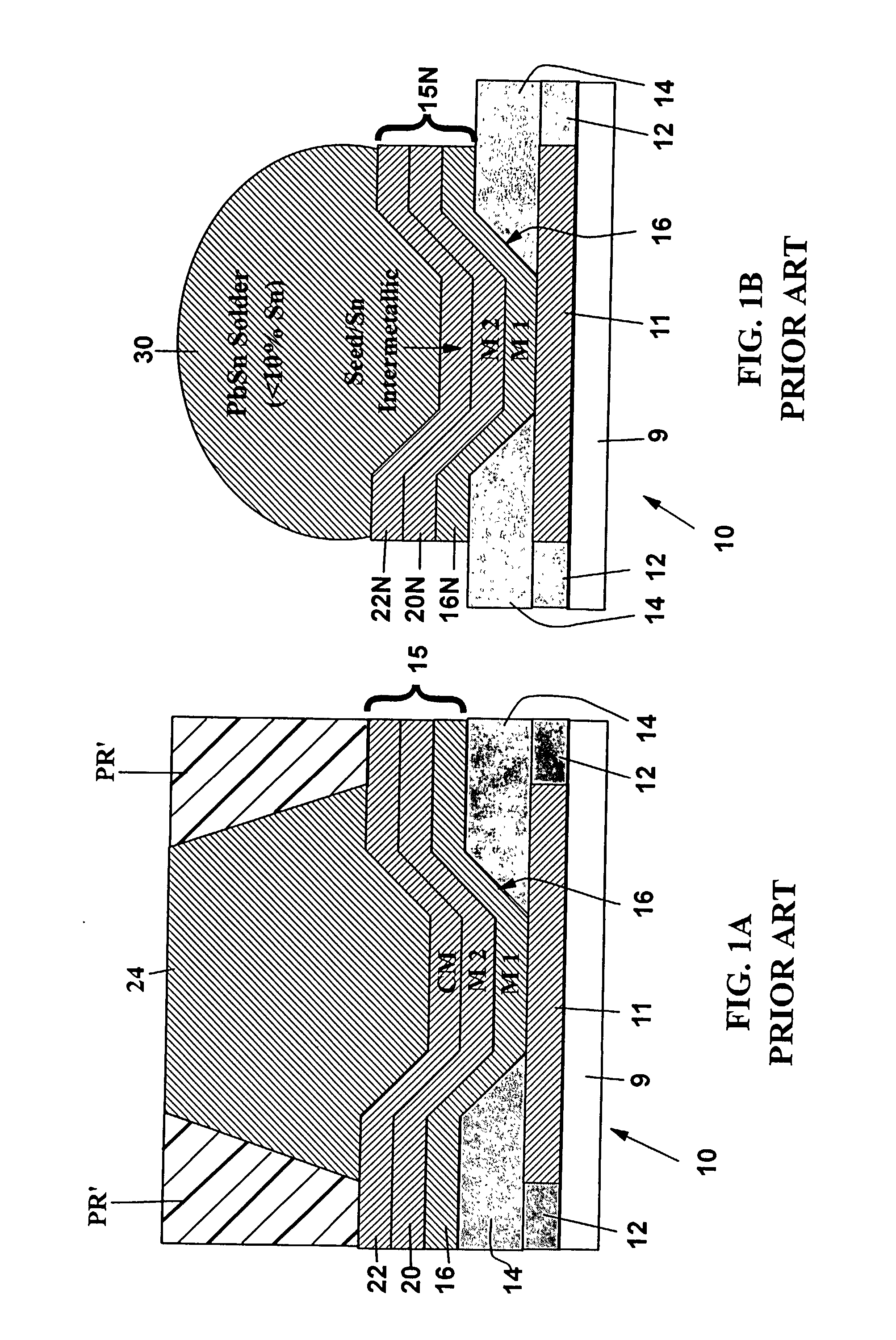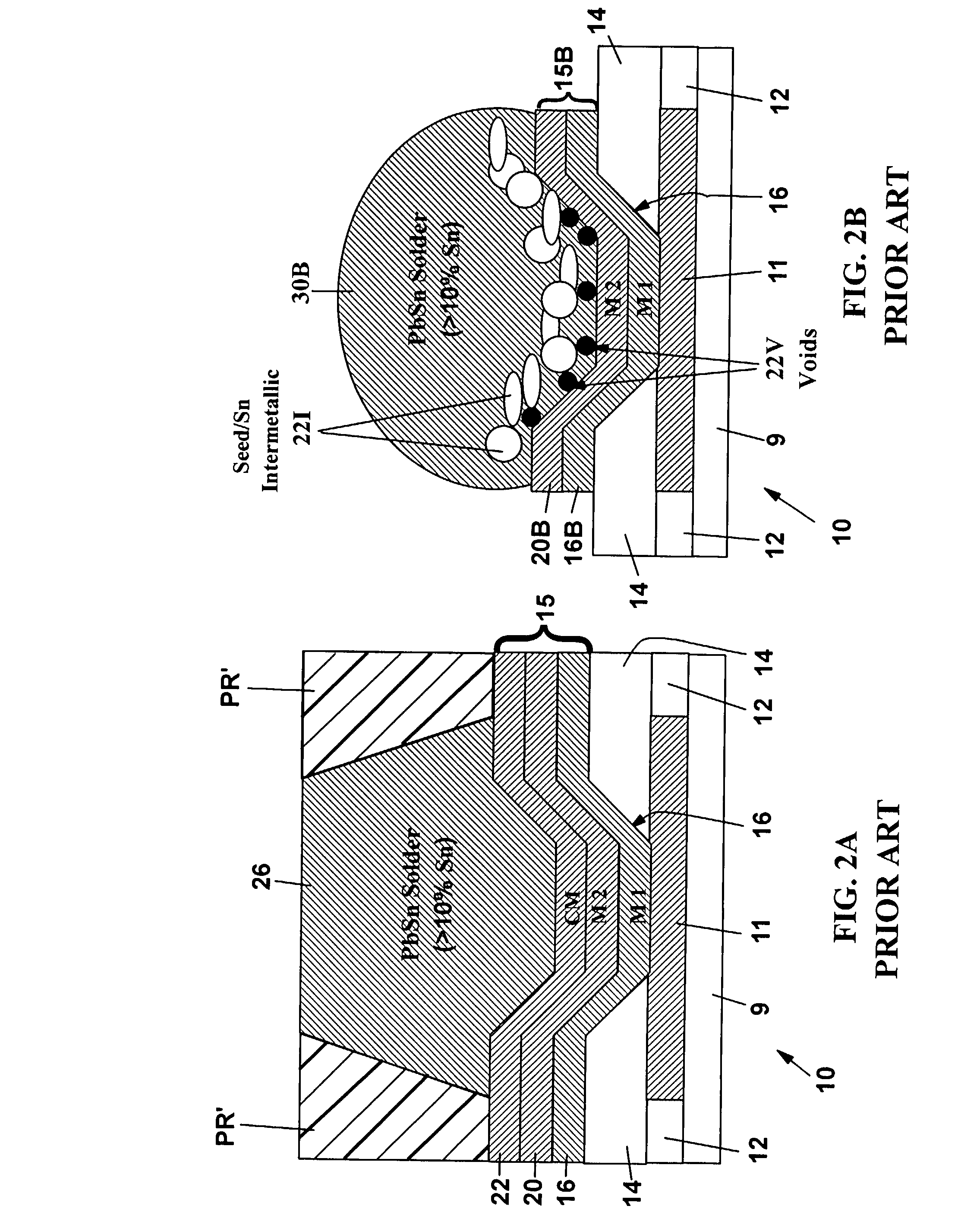Sacrificial seed layer process for forming c4 solder bumps
a seed layer and c4 technology, applied in the direction of soldering apparatus, semiconductor/solid-state device details, manufacturing tools, etc., can solve the problems of high-lead solder bumps that melt at temperatures greater than 300.degree. c., cannot be universally applicable, and structure does not necessarily produce a reliable structur
- Summary
- Abstract
- Description
- Claims
- Application Information
AI Technical Summary
Problems solved by technology
Method used
Image
Examples
second preferred embodiment
[0058] A second embodiment of this invention is implemented by modification of the process of FIGS. 3A-3B by adding a barrier layer or layers between the intermediate M2 layer 20 and the C4 solder bump 26 as illustrated by FIGS. 4A-4H. For example, a barrier layer 28 composed of nickel (Ni) can be electroplated in the through holes 23' as shown in FIG. 4C onto the top surface of intermediate M2 layer 20 into the windows 23 in the photoresist mask PR' in the shape of the through holes 23' at the bottom of the windows 23 (as a base for electroplating of C4 solder bumps 26) after removal of the copper of CM layer 22, but prior to the deposition of the C4 solder bumps 26, as outlined in the following process sequence: P0 1. Referring to FIG. 4A, deposit a multi-layer seed layer stack 15 as in FIG. 3A, which includes the M1 adhesion layer 16, the intermediate, metallic, M2 layer 20 and the metallic surface, CM layer 22 formed above M2 layer 20, deposited in that order on the contact 11 a...
PUM
| Property | Measurement | Unit |
|---|---|---|
| Adhesion strength | aaaaa | aaaaa |
| Electrical conductor | aaaaa | aaaaa |
Abstract
Description
Claims
Application Information
 Login to View More
Login to View More - R&D
- Intellectual Property
- Life Sciences
- Materials
- Tech Scout
- Unparalleled Data Quality
- Higher Quality Content
- 60% Fewer Hallucinations
Browse by: Latest US Patents, China's latest patents, Technical Efficacy Thesaurus, Application Domain, Technology Topic, Popular Technical Reports.
© 2025 PatSnap. All rights reserved.Legal|Privacy policy|Modern Slavery Act Transparency Statement|Sitemap|About US| Contact US: help@patsnap.com



